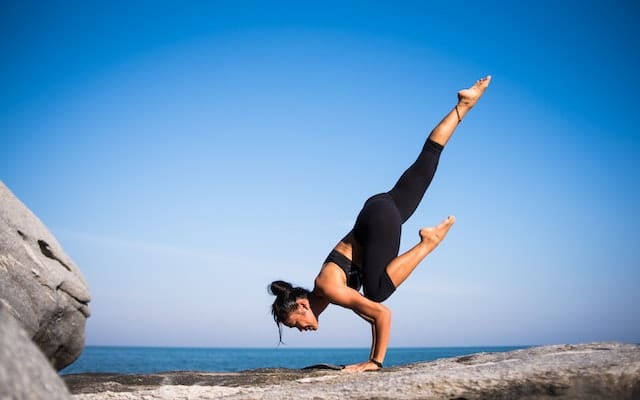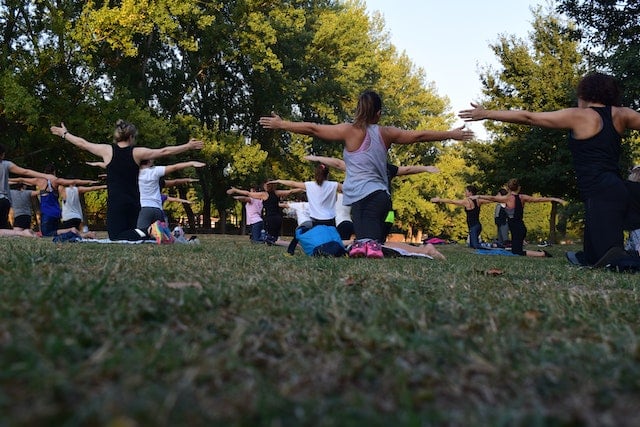Health Benefits of Yoga: Is Yoga Good for You?
Yoga has long been promoted as a holistic practice for improving flexibility, mental clarity, and overall health. However, it may not be the ultimate solution for everyone, particularly for those seeking to improve strength, aesthetics, and muscular control.
While yoga does have some benefits, there are significant drawbacks that deserve attention.
In fact, many practitioners—including myself—have left yoga behind in favor of strength training, mobility work, and other more functional fitness practices, experiencing far better results for overall health and aesthetics.
Yoga, Overstretching, and the Risk of Injury

One of the primary concerns with yoga is the risk of overstretching muscles and ligaments. Yoga poses often emphasize deep stretches that can lead to hypermobility, weakening the joints and increasing the risk of injury.
This is particularly problematic for those with naturally flexible bodies, as they may push beyond their safe range of motion without realizing it.
Unlike targeted mobility training, yoga lacks the focus on active control through a joint’s full range of motion. Over time, this can lead to joint instability rather than improved strength or functionality.
For example, poses like deep backbends or splits may feel impressive but often compromise the integrity of the spine or hips if performed without adequate strength to support those positions.
Yoga & Muscular Control
Yoga also falls short in teaching true muscular control. While it encourages static holding of poses, this doesn’t translate well to dynamic movements or functional strength. Many yoga poses rely on passive flexibility, which doesn’t require the muscles to engage fully throughout their range of motion.
This creates a gap between flexibility and strength, leaving practitioners vulnerable to injuries during activities that demand both.
In contrast, real strength training develops controlled, purposeful movements that build strength, balance, and coordination. Exercises like squats, deadlifts, and lunges activate multiple muscle groups, teaching the body to stabilize and generate power in a way that yoga rarely achieves.
Yoga & Body Aesthetics
While yoga can improve posture and core stability, it isn’t an effective method for building an aesthetic physique. Yoga lacks the progressive overload principle, which is essential for building muscle and sculpting the body.
Unlike strength training, where you can progressively increase resistance and volume, yoga poses plateau quickly in terms of physical challenge.
For those seeking a well-defined, muscular body, incorporating weightlifting or bodyweight exercises is far more effective.
Movements like pull-ups, push-ups, and kettlebell swings not only enhance strength but also promote a lean, athletic look that yoga often fails to achieve.
Yoga’s Roots in Paganism
Yoga’s origins also raise questions for those who prioritize their spiritual beliefs.
Rooted in ancient Hinduism, yoga was historically a spiritual practice aimed at achieving union with deities and cosmic energy, and the poses (asanas), chants, and meditative yoga practices are intertwined with these religious beliefs.
While modern yoga often distances itself from these roots, many of its elements remain tied to these practices.
Best Alternatives to Yoga
After leaving yoga behind, I found that my body responded far better to a combination of strength training, mobility-focused exercises, and self-massage techniques like foam rolling.
This approach not only improved my physical performance but also helped me build a stronger, healthier body.
Strength Training
Strength training is a proven method for building muscle, improving bone density, and enhancing overall physical performance.
Exercises like goblet squats, deadlifts, bench presses, and pull-ups target large muscle groups and promote functional strength.
This type of training not only sculpts the body but also enhances stability, coordination, and overall health.
Mobility Training
Mobility training, unlike yoga, emphasizes active control and strength throughout a joint’s range of motion.
Movements like the Cossack squat, thoracic rotations, and Jefferson curls target specific areas while ensuring that strength supports flexibility. Mobility exercises also prepare the body for dynamic movements, making them more applicable to sports and daily activities.
Foam Rolling & Self-Massage
Foam rolling and other self-myofascial release techniques are excellent for releasing tight muscles, improving circulation, and enhancing recovery.
Unlike static stretching in yoga, foam rolling and other self-massage tools address trigger points and restore muscle function without overstretching.
This method helps alleviate soreness and maintain optimal muscle function, complementing strength training and mobility work.
Final Thoughts: Should You Try Yoga?
Services like YogaDownload.com are popular, but even the best yoga programs (like the 21-Day Yoga Shred program), their limitations in building strength, aesthetics, and true muscular control make them less effective than other fitness practices.
Overstretching can compromise joint health, and the lack of progressive overload means it doesn’t deliver the same physical benefits as strength training. Add to this its historical roots in paganism, and many find it an unsuitable choice for their lifestyle and fitness goals.
Switching to a routine that includes strength training, active mobility exercises, and recovery techniques like foam rolling has been transformative for my body and overall health.
This approach not only builds strength and stability but also ensures long-term joint health and a lean, aesthetic physique. For those seeking true functional fitness and alignment with their values, this method offers a far superior alternative.



